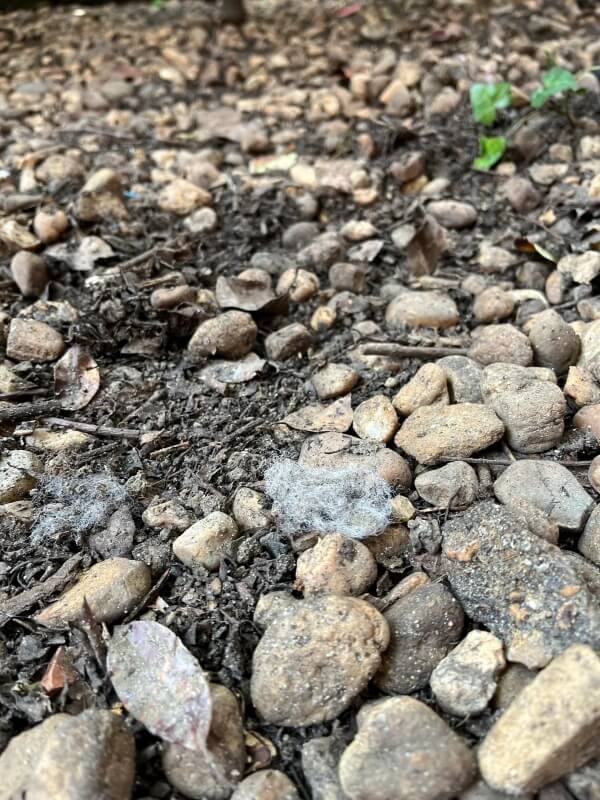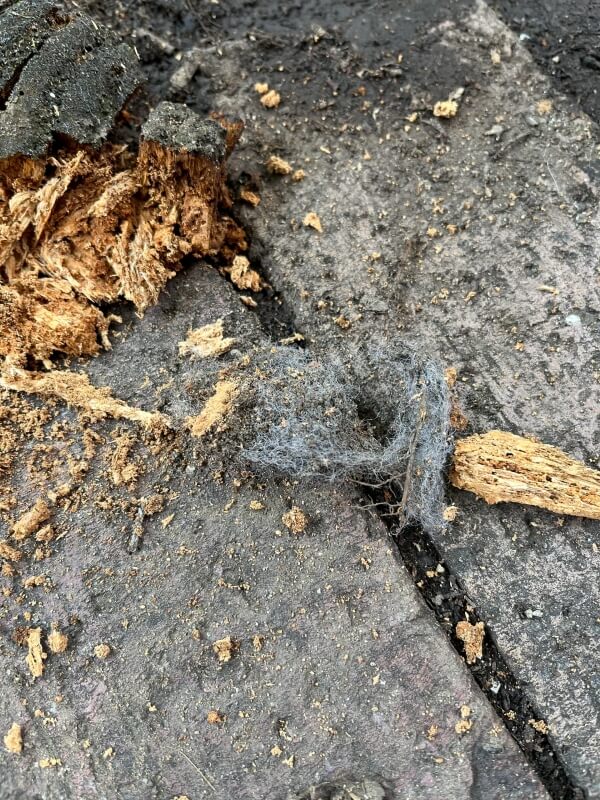Taking part in a complete landscaping overhaul not only can require some blood, sweat, and tears but also can lead to some unique discoveries in the soil.
Posting to the r/landscaping subreddit, one home gardener shared their experience attempting what they called a "DIY backyard cleanup."


After picking up trash and old, weathered landscaping fabric by hand, the Redditor began using a tiller. It wasn't long before they started pulling up landscaping fabric and an odd material that had them searching for answers.
"It looks like wool or hair? I have no clue and it's grossing me the hell out," the original poster wrote.
Several commenters chimed in and offered their take on the situation.
"Polyfill from a dog stuffy or landscaping fabric. Rodents and birds will steal this stuff for nests from other yards," noted one user.
Save $10,000 on solar panels without even sharing your phone number Want to go solar but not sure who to trust? EnergySage has your back with free and transparent quotes from fully vetted providers that can help you save as much as $10k on installation. To get started, just answer a few questions about your home — no phone number required. Within a day or two, EnergySage will email you the best local options for your needs, and their expert advisers can help you compare quotes and pick a winner. |
Another also pointed to landscaping fabric as the likely culprit. "I'd guess landscape fabric. I just pulled up a TON at the house we bought," they wrote. "Think as it very very slowly breaks down it gets stringy and furry like. I thought it was a rabbit's nest at first."
Unfortunately, landscaping fabric does more harm than good. According to the University of Illinois Urbana-Champaign, while landscaping fabric can initially prevent weeds, it eventually hinders plant growth and soil health. Over time, weeds can even grow on top of the fabric, making it difficult to remove.
You can turn to native ground cover plants to help discourage the growth of invasive plants or weeds as a natural alternative. Rewilding your yard and using native ground cover plants can prevent weeds by creating dense, low-lying mats that outcompete weeds for resources such as sunlight, water, and nutrients.
Alongside ground cover, native plants are crucial for attracting and supporting pollinators by providing the right types of food, nesting locations, and shelter. These plants offer a diverse range of pollen and nectar with the perfect nutrients for pollinators such as bees, butterflies, and hummingbirds, often blooming at times that match the pollinators' life cycles and migration patterns.
TCD Picks » Upway Spotlight
💡Upway makes it easy to find discounts of up to 60% on premium e-bike brands
|
What's the hardest thing about taking care of your yard? Click your choice to see results and speak your mind. |
Plus, after switching to a native plant lawn, you'll save money on water, fertilizer, and pesticides.
Redditors continued to discuss the downsides of landscaping fabric.
"The reality is that landscaping fabric ruins the soil through suppression of natural processes like decomposition, earthworm activity, and air and water exchange, which leads to compaction," one user stated.
Join our free newsletter for easy tips to save more and waste less, and don't miss this cool list of easy ways to help yourself while helping the planet.








